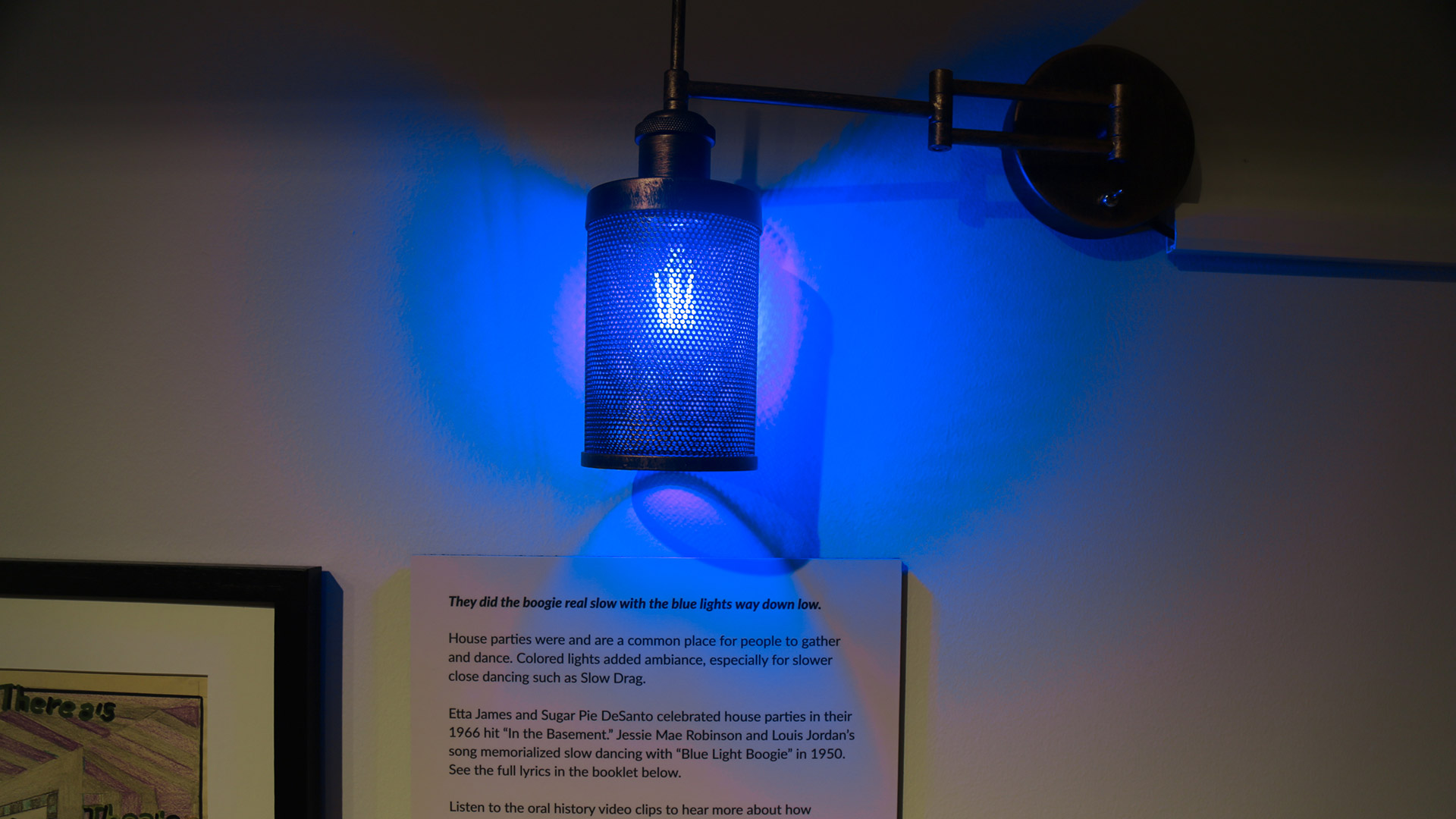
House Parties
House Parties and the Blue Light
House parties, a common place for people to gather and dance, were familiar experiences for many. Blue lights were often used to add ambiance for slower dancing such as the Slow Drag. Listen to University of Illinois Alumni from the early 1970s reflect on their dance experiences from their youth. Explore these same themes in song lyrics from the 1950s and 1960s below.
Audio Clips
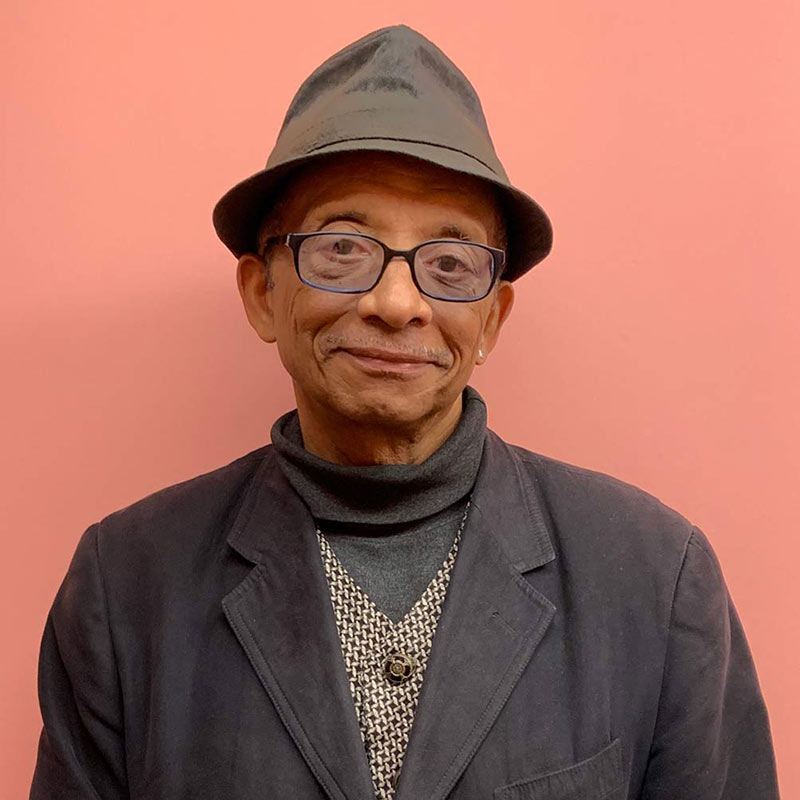
Blue Light Red Light
Stan West describes using colored lights at house parties in Chicago.
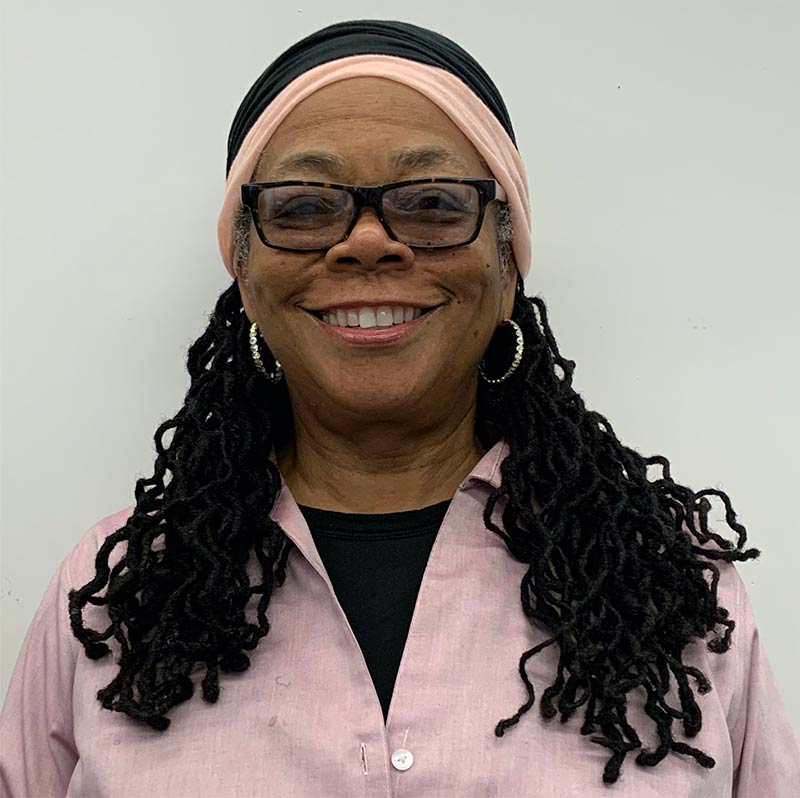
Slow Drag
Victora Bostic remembers what it was like to do the Slow Drag in Philadelphia.
Transcript
And we had a dance called the Slow Drag. I guess people nowadays may call it a slow dance, but it was Slow Drag. You're dancing close with your partner, dancing close with your partner, very close with your partner. And we would only, us females, would only want to do that dance with other guys from Philly. Because the guys from other places, the largest number was from Chicago, but the guys from other places, they didn't really know how to Slow Drag. And they thought it was like ‘oh, a chance to get close and, you know, do some little freaky stuff,’ you know, but it wasn't like that. You had to know how to move with your partner in order to keep it from being some freaky stuff. And so we just didn't like slow dancing with those guys. And they would say 'you never want to dance with us' but ‘because you don't know how to do this.’
A Slow Drag, if you're dancing with just a dance partner, somebody coming to ask you to dance, it's one thing. It's one thing and that thing is just a real civil kind of just step, step. Yeah, pretty much. Step, step and then you don't step. You just stand and you just do some body movements together, and then you start stepping again. But you never back away from each other. Like that Chicago walk thing you stayed close together the entire time. But then, if you were dancing with your boyfriend, or dancing with your girlfriend, then it was a whole different kind of mood and movement that you did. You might do a little bit of grind in between, you know, just a little, and then you go back to civilized dancing. And that was how the Slow Drag was.
There were other people on the floor. Some doing the same thing. Some doing a little milder version of the same thing. And some just, just dancing without any kind of intimate movements. So, you know, it was social. And you didn't want to get with somebody you didn't like, on a long record, you know, but anyway, that's, that was our Slow Drag.
Dance locations – house parties, community centers
Victoria Bostic describes house parties and other locations where she and her friends liked to go to dance.
Transcript
I didn't like bars. I mean I sneaked in bars when I was about 17 and I found out I don't like the scene, but the house parties, a lot of house parties with the red light on, dark and then there were the waistline parties where you, they take a tape measure and measure your waist and that's how much you have to pay to get in. I know, you know, but I guess it was a way of making money for the organization, whatever the organization or club was. And then we had this place. We had places in Philadelphia. Times Auditorium, there were dances there. The Athletic Club. There were dances there. The Blue Horizon. We had dances there. And Town Hall, there was a Town Hall. All of that stuff, the Blue Horizon is still there, but it's mostly boxing. We would go there and you go with your girlfriends and meet up with the boys who come with their boyfriends you know, with their fellow friends, and you danced you know sometimes it would be fighting too, but that's because you came from other parts of town and you know, but the party will be going on you'll be dancing and then all of a sudden you hear a chair fall with something and it's like oh, we gotta get out of here. So you run. But it was all in all, basically it was safe. Basically it was safe and it was enjoyable.
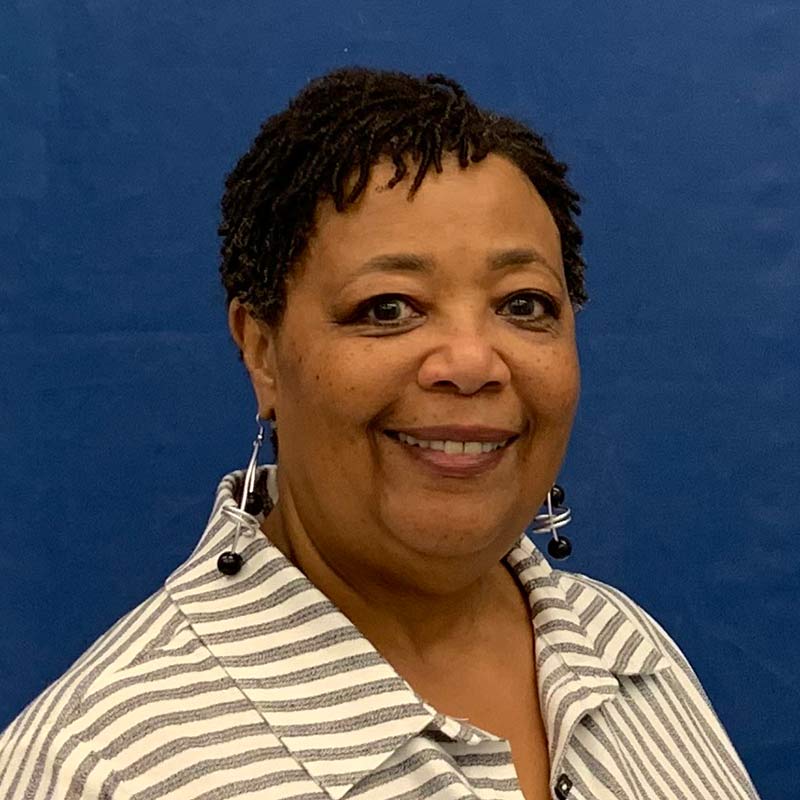
Blue light basement parties
Toni Kersey recalls how teenagers used the blue light when slow dancing, turning it off to signal to their friends to stop intimate dancing because parents were coming.
Transcript
Toni: You know when you were a teenager, you know, people had a lot of house parties back then. But, and parents were always in the house, but when they wanted to get a little closer, they always have a blue light that they will put on in the basement. And if somebody knew that the parents was coming down, you turn on the regular lights…
Toni: Blue light in the basement parties. There was a lot of basement parties as a teenager you didn't really go to clubs and stuff as much. I mean that's I gotta became an older teenager you started doing that more when you would pay to get in but as a younger teenager you went to basement parties.
Jennifer: And they had them every weekend?
Toni: Pretty somebody was having one, you know might not be your neighbor or anything might have to go out the neighborhood but somebody was always having a party.
Toni: Parents were always home at those parties...and they might be partying upstairs, drinking, and whatever but you didn't have a party there's nobody home. That didn't happen. [laughing] And most of the time they were partying upstairs. [laughing] That was fun. Brings back good memories.
Song Lyrics
"Blue Light Boogie"
Jessie Mae Robinson and Louis Jordan’s song memorialized slow dancing with “Blue Light Boogie” in 1950 with the refrain “They did the boogie real slow with the blue lights way down low.”
They did the Boogie real slow with the blue lights way down low.
I went to a party, with the bobby socks.
At the party, I really got a shock.
They did the Boogie real slow with the blue lights way down low.
I started swingin', all she did was rock.
I kept on swingin', she said ‘Now, now listen Pop,
I like to boogie real slow with the blue lights way down low.'
I looked around, the shades were down.
The chicks were in the groove.
I didn’t see how those cats could dance when their feet didn’t even move. "Blue Light Boogie"
Listen to "Blue Light Boogie" on Amazon (external link), Spotify (external link), or iTunes (external link).
"In The Basement"
Etta James and Sugar Pie DeSanto celebrated house parties in their 1966 hit “In the Basement” by Cadet Records Lyrics by songwriters Carl Smith, Raynard Miner, and Roquel Davis:
Oh, now tell me where can you party, child, all night long?
In the basement, down in the basement, yeah.
Oh where can you go when your money gets low?
In the basement, whoa, down in the basement.
And if a storm is taking place, you can jam and still be safe.
In the basement, down in the basement, yeah…
Where can you dance to any music you choose?
In the basement, whoa down in the basement.
Oh, you got the comforts of home, a nightclub too.
In the basement, whoa, down in the basement.
There’s no cover charge or fee and the food and drinks are free,
in the basement, down in the basement.
In the basement, that’s where it’s at.
Where they don’t, where they don’t check your age at the door.
In the basement, whoa, down in the basement.
Barracuda and Jerk till your feet get sore.
In the basement, whoa, down in the basement.
Do any dance you want to do, there’s no one under you
in the basement, I know it, you tell em, I wanna go.
In the basement, that’s where it’s at, I wanna go… "In the Basement"
Listen to "In the Basement" on Amazon (external link), Spotify (external link), or iTunes (external link).
Oral Histories
Listen to more stories of dance in the lives of African Americans who graduated from the University of Illinois or have lived in Champaign and neighboring communities.
Oral HistoriesImages of house parties with people dancing
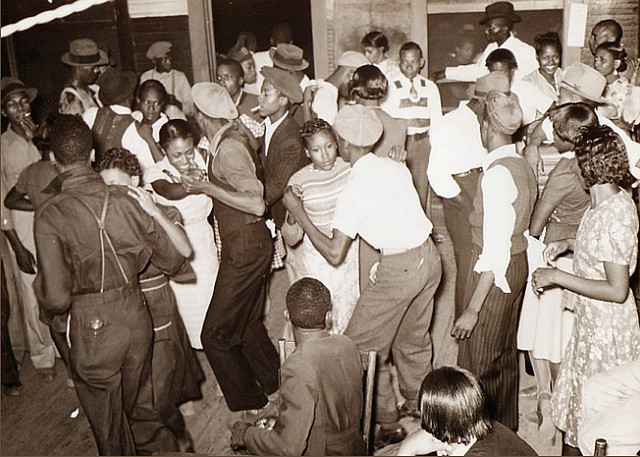
African Americans Dancing in a Juke Joint, United Sates, 20th Century. By Unknown Photographer. Wikipedia
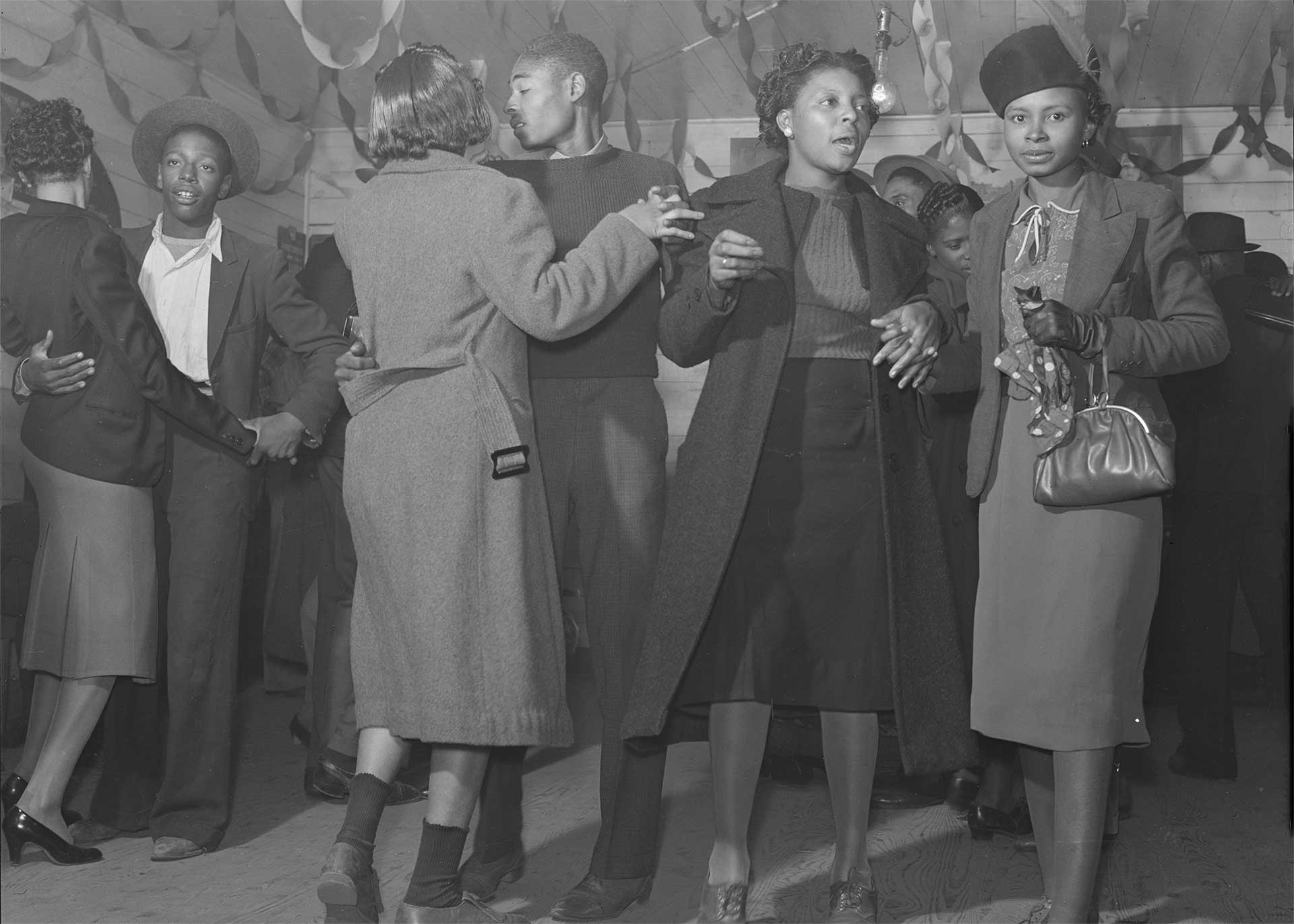
African Americans Dancing in a Juke Joint, Clarksdale, Mississippi, 1939. By Marion Post Wolcott. Farm Security Administration, Library of Congress.